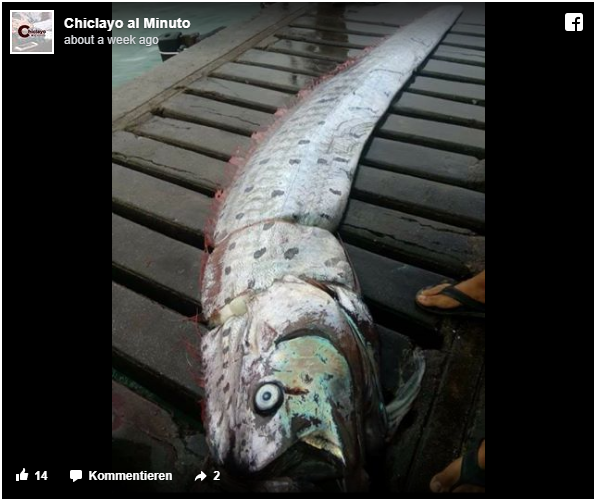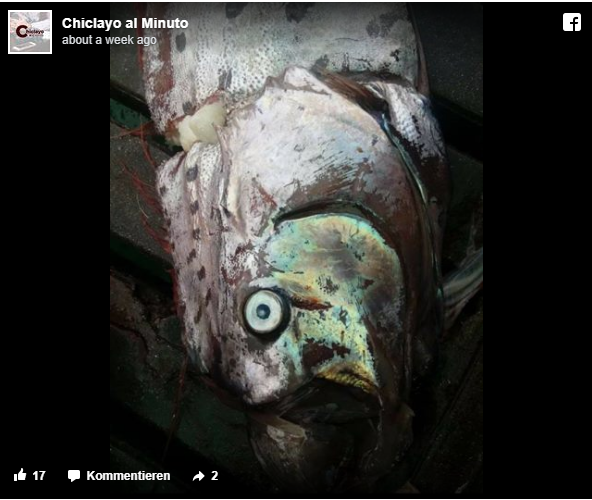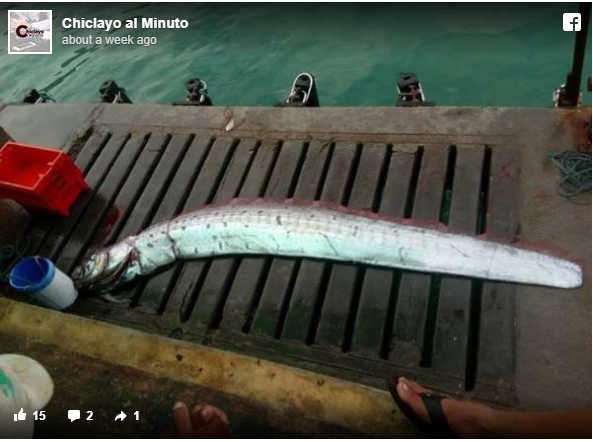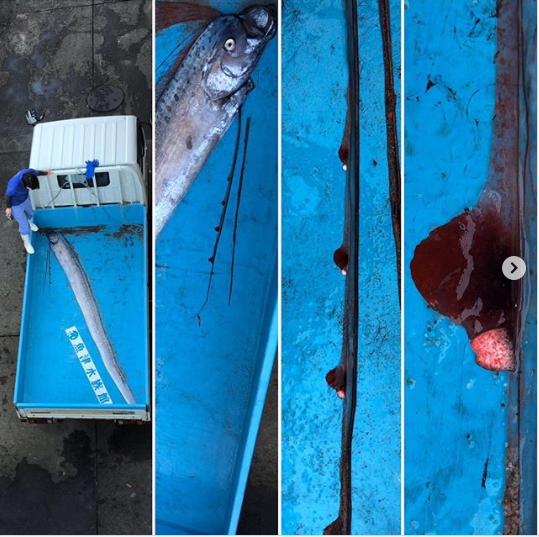Fear as Rare Deep-Sea Fish Known as Omen of Earthquakes Appears in Japan
Published on February 15, 2019 at 3:01 PM by FACE OF MALAWI
A deep-sea fish said to be the omen of earthquakes and tsunamis has been found in fishing nets off the coast of Peru, prompting a stir among locals.
The oarfish, which can reach over 30 feet in length, is thought to be behind some of the sea serpent myths of the west.
The Japanese word for this fish, ryugu no tsukai, means, “messenger from the palace of the dragon king.” According to folklore, the fish rise from the depths to the surface and beach themselves when an earthquake is coming.
Many local media reports in Peru say that two oarfish were found in the town of Mancora, near the border with Equador.
The reports mostly appear to stem from one source: a brief news post from local media outlet Chiclayo al Minuto, which posted three photographs of an oarfish on a gangway.
According to Chiclayo al Minuto, on the morning of Feb. 6, local fisherman found the oarfish in their nets. The fish, which was was about 16 feet long, initially confused them because they had never seen that species before on the northern coast of Peru.
The oarfish is the longest bony fish in the world, with the longest specimen ever recorded being 35 feet.
Spotted Before the Fukushima Earthquake
Scientists say that there is no proof that Oarfish are able to predict natural disasters, though there are various theories as to how they might do so.
The myth of the Oarfish as a harbinger of disaster gained a little ground after the 2011 Fukushima earthquake and tsunami, which killed nearly 20,000 people. There were reports of at least a dozen oarfish washing up onto Japan’s coastline in the previous year.
Hiroyuki Motomura, a professor of ichthyology at Kagoshima University,told the South China Morning Post there is a more ordinary explanation for the fish appearing at Toyama bay.
“I have around 20 specimens of this fish in my collection so it’s not a very rare species, but I believe these fish tend to rise to the surface when their physical condition is poor, rising on water currents, which is why they are so often dead when they are found,” he said.
But, according to Rachel Grant, a lecturer in animal biology at Anglia Ruskin University in Cambridge, it is “theoretically possible” that oarfish deaths could be a signal of earthquakes to come.
‘Sensitive to Active Faults’
“When an earthquake occurs there can be a build-up of pressure in the rocks which can lead to electrostatic charges that cause electrically-charged ions to be released into the water,” she told Euro News in 2017. “This can lead to the formation of hydrogen peroxide, which is a toxic compound. The charged ions can also oxidise organic matter which could either kill the fish or force them to leave the deep ocean and rise to the surface.”
“There is no scientific evidence at all for the theory that oarfish appear around big quakes,” Uozu Aquarium keeper Kazusa Saiba told CNN. “But we cannot 100 percent deny the possibility.”
Saiba said one possible explanation is subtle changes in the earth’s crust ahead of an earthquake “might cause the current to stir and push creatures at the bottom to the surface.”
Professor Shigeo Aramaki, a seismologist at the University of Tokyo, dismissed the fears of social media users as “nothing” according to the South China Morning Post.
“I’m not a specialist in fish, but there is no academic literature that has proven a scientific link to the behavior of animals and seismic activity,” he said. “I see absolutely no reason for concern and I have seen no updated reports of increased seismic activity in this country in recent weeks.”
Kiyoshi Wadatsumi, a specialist in ecological seismology, told Japan Times in 2010, “Deep-sea fish living near the sea bottom are more sensitive to the movements of active faults than those near the surface of the sea.”
Source:The Epoch Times
Subscribe to our Youtube Channel:






